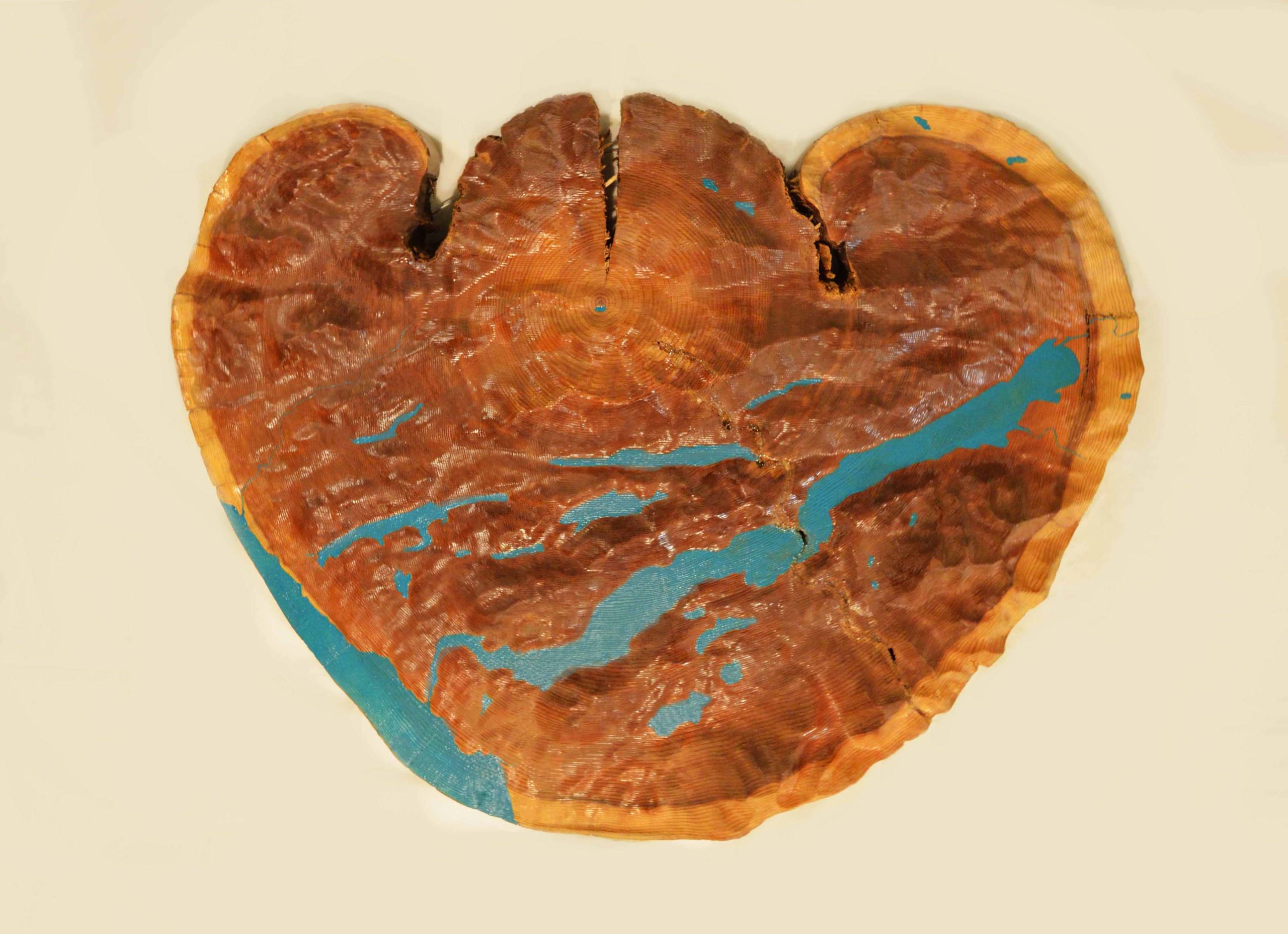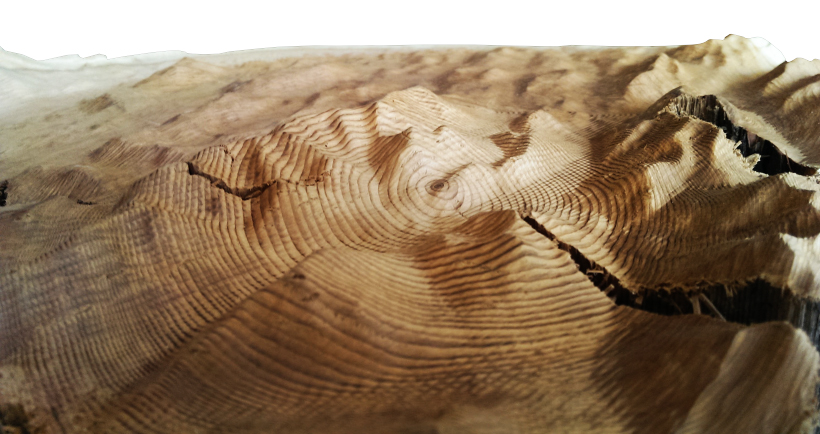Client: Jacob Earnshaw
Cultural Tree Carving, Vancouver Island
"I felt that having a topographical map carved into this culturally modified tree sample would give back some of its context after having been cut down and removed from the site. It's a beautiful piece."
- Jacob Earnshaw
This carving on a slice of a culturally modified cedar tree was commissioned by Jacob Earnshaw, a Victoria-based archaeologist. It features a map of the region where the tree grew on Vancouver Island, British Columbia. The blue highlights point to Nitinat, Hobiton and other nearby lakes, leading out to the Pacific Ocean on the left edge where the West Coast Trail is located.
Culturally modified trees are signs of historical use by First Nations. They have used cedar strips since time immemorial for many purposes including ropes, baskets and clothing. A portion of the bark of this cedar tree was harvested for use in 1878. Afterward, the tree continued to grow and heal itself, developing mushroom-shaped lobes around the area where the bark was taken.
The topographical map carving was positioned so that the smallest tree ring in the centre pinpoints the actual spot on the landscape where the tree was found during an archaeological survey.
The coastal cedar stump was located in an old-growth clearcut near the Klanawa River, north of Nitinat Lake within Nuu-chah-nulth territory. The archaeologists took this sample of the wood in order to date the finding.
Earnshaw, President of the BC Archaeological Society and culturally modified tree specialist, is pictured here studying a possible CMT in a stand of intact old-growth forest near Naka Creek on northern Vancouver Island. Photo by Louis Bockner. www.LouisBockner.com
As ancient rainforests continue to disappear on Vancouver Island, culturally modified trees continue to play an important role in marking sites of cultural use by Indigenous peoples on the coast.



